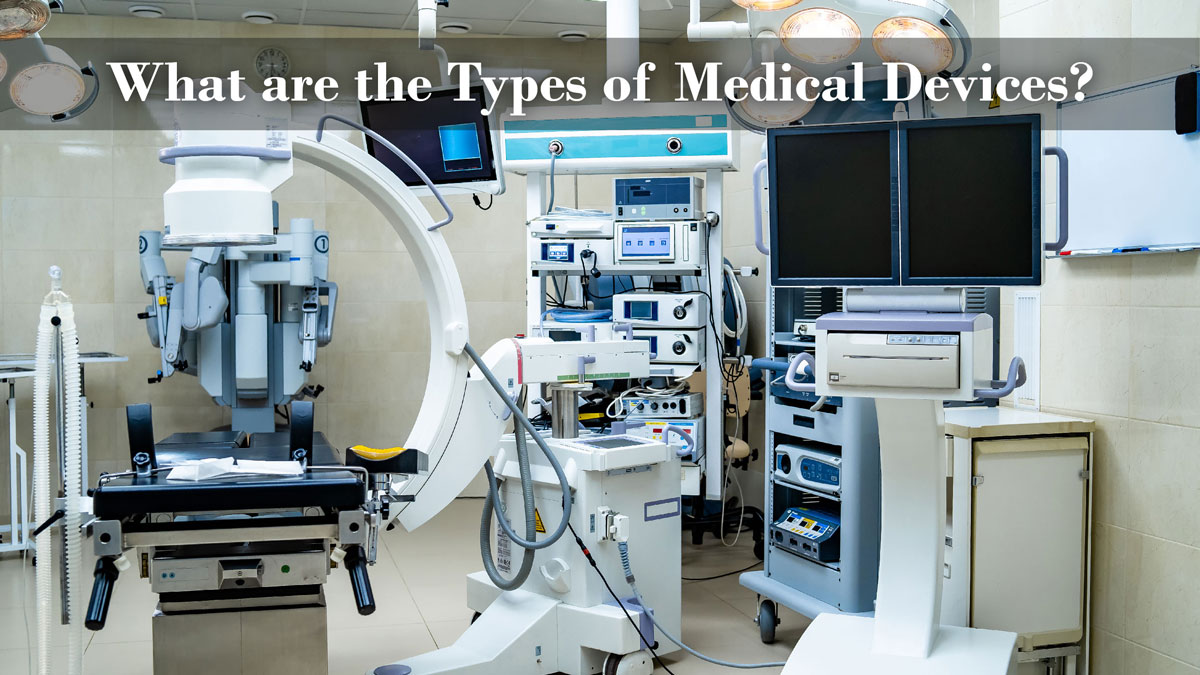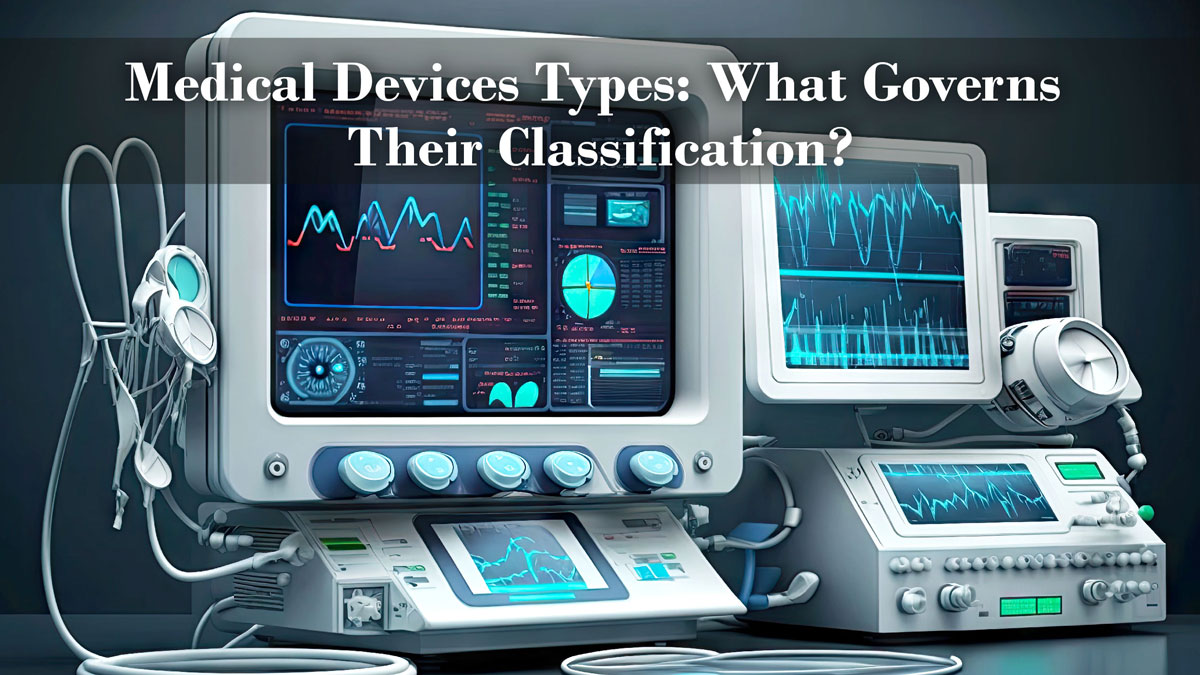In the realm of healthcare, innovation is not confined to medications and treatments alone. A crucial aspect of modern healthcare lies in the incredible array of medical devices types that have revolutionized patient care and treatment outcomes. From wearable gadgets that monitor our vitals to complex implants that sustain life, the world of medical devices is vast and ever-evolving.
Let’s explore the diverse landscape of medical devices, uncovering the different types that play pivotal roles in the healthcare industry.
What are Medical Devices?
A medical device encompasses any tool, instrument, software, material, or article, whether used independently or in conjunction, including software designed by a manufacturer for specific diagnostic or therapeutic purposes, and intended for use in humans to achieve several objectives.
These objectives encompass diagnosing, preventing, monitoring, treating, or alleviating diseases; diagnosing, monitoring, treating, alleviating, or compensating for injury or impairment effects; testing, replacing, or modifying anatomical structures or physiological processes; and regulating conception. Notably, these devices do not primarily rely on pharmacological, immunological, or metabolic methods for their main intended action, although they may be complemented by such means.
What are the Types of Medical Devices?

A vast variety of tools, equipment, machines, and implants used in medicine are included in the category of medical devices types. According to their use and function, they can be divided into the following:
- Diagnostic Medical Devices: These instruments are employed in the detection and verification of various health conditions. These instruments encompass MRI scanners, X-ray machines, blood sugar monitors, and temperature gauges.
- Wearable Medical Devices: These are wearable gadgets that individuals can use to track different aspects of their health. Some examples of these devices are fitness trackers, devices for continuous glucose monitoring, and smartwatches equipped with health monitoring capabilities.
- Cardiovascular Medical Devices: One of the pivotal medical device types, these are associated with the cardiovascular system and are designed to address issues such as blocked arteries, malfunctioning heart valves, and irregular heart rhythms.
- Respiratory Medical Devices: These are tools designed to assist the respiratory system in its operation. This classification encompasses equipment such as ventilators, nebulizers, and continuous positive airway pressure (CPAP) machines.
- Telemedicine Devices: Although they are not categorized independently, these devices play a crucial role in enabling telemedicine services. This encompasses equipment for video conferencing, devices for remote monitoring, and digital stethoscopes.
- Therapeutic Equipment: These medical device types are utilized to address or oversee medical conditions. Some of these are infusion pumps, dialysis machines, and radiation therapy machines.
- Implantable Medical Devices: These medical devices are strategically implanted in the body to assist with diverse functionalities. Examples encompass pacemakers, cochlear implants, and prosthetic joints.
- Monitoring Devices: These devices are employed for the purpose of monitoring and documenting physiological indicators. Examples include blood pressure monitors, cardiac monitors, and pulse oximeters.
- Dental Medical Devices: In the realm of dental care and procedures, you will come across various medical devices types. These can encompass dental drills, X-ray machines, and dental chairs, among others.
- Orthopedic Medical Devices: These tools are specifically designed for managing musculoskeletal disorders. These instruments include orthopedic implants, braces, splints, and so on.
It is worth mentioning that there can be some overlap between these categories, and certain devices might belong to multiple classifications based on their functionalities. Furthermore, medical devices types are subject to regulatory standards and rigorous testing to ensure their approval for use in healthcare environments.
Medical Devices Types: What Governs Their Classification?

In the United States, the regulation of medical devices falls under the jurisdiction of the Food and Drug Administration (FDA). The FDA’s Center for Devices & Radiological Health (CDRH) is responsible for overseeing this area.
The primary objective of the CDRH is to safeguard and advance public health, specifically by ensuring the safety of medical devices. To achieve this, medical devices in the United States are categorized into three classes: Class I, Class II, and Class III, as designated by the FDA.
The classification of FDA medical devices primarily depends on the level of risk associated with the device.
In the realm of medical devices, class I devices are typically considered to have low risk. On the other hand, class II devices pose a higher level of risk compared to class I devices, but still lower than that of class III devices. Class III devices, in turn, are regarded as having the highest level of risk. The specific controls necessary for your product will depend on its classification.
The European Union’s regulations for medical devices are governed by the EU MDR 2017/745, enforced by the European Commission (EC). As of 26 May 2021, the EU MDR has been in effect in the European Union.
This regulation introduces amendments to Directive 2001/83/EC, Regulation (EC) No 178/2002, and Regulation (EC) No 1223/2009, while also repealing Council Directives 90/385/EEC and 93/42/EEC.
The regulations governing medical devices in Canada are defined by the Canadian government and enforced by Health Canada.
In order to enter the Canadian market, similar to the United States and the European Union (EU), it is essential to ascertain the classification of medical devices according to Canadian regulations.
Final Thoughts
It is evident that the various medical device types serve as invaluable assets to modern healthcare. These technological wonders, ranging from diagnostic aids to life-sustaining implants, contribute distinctively to elevating patient care and expanding the horizons of medical capabilities. Ongoing advancements and enhancements in this domain hold the promise of even more thrilling possibilities for the future of healthcare.




